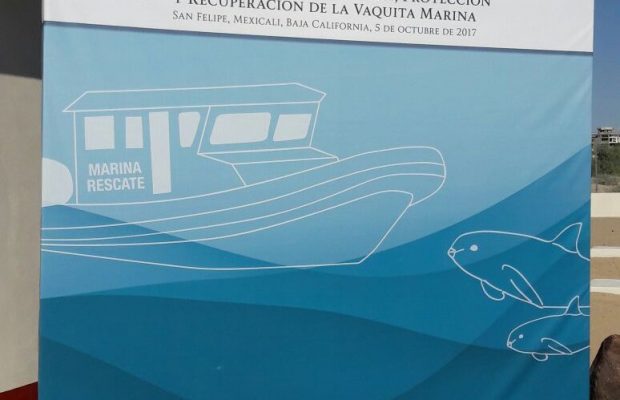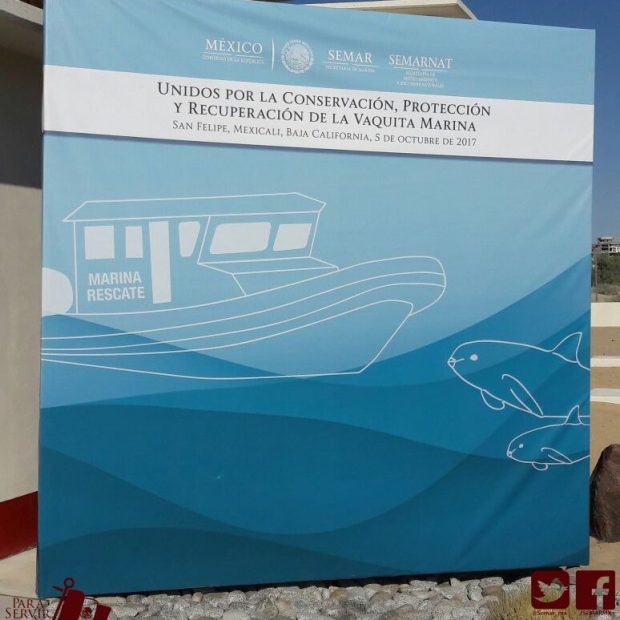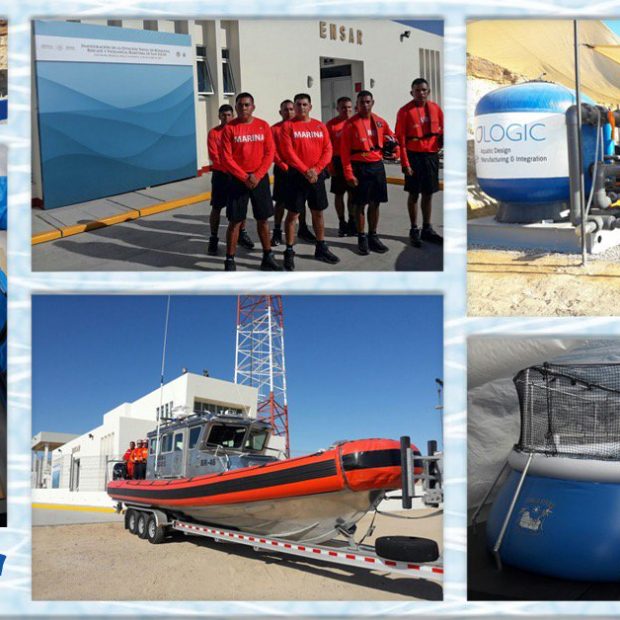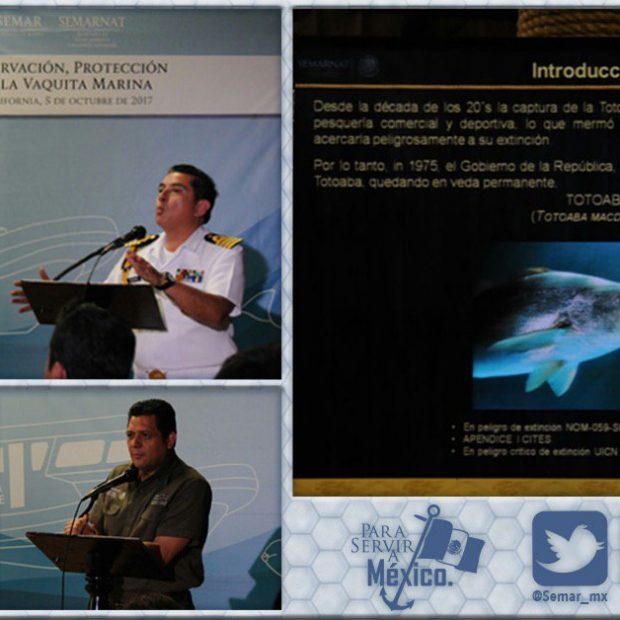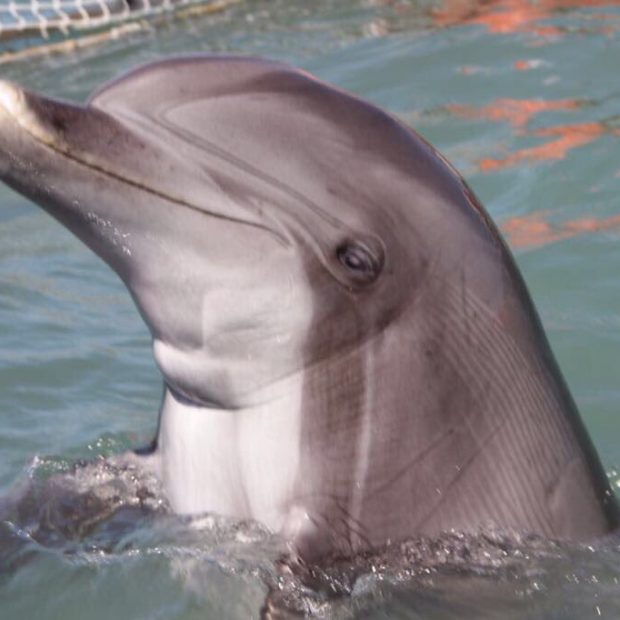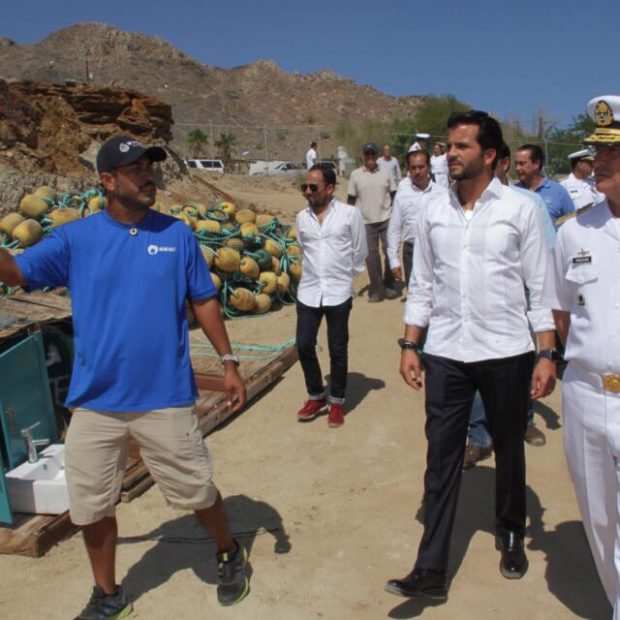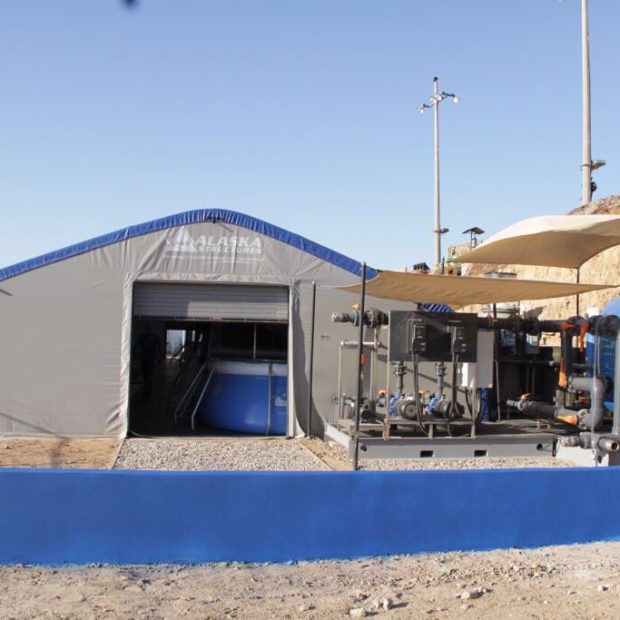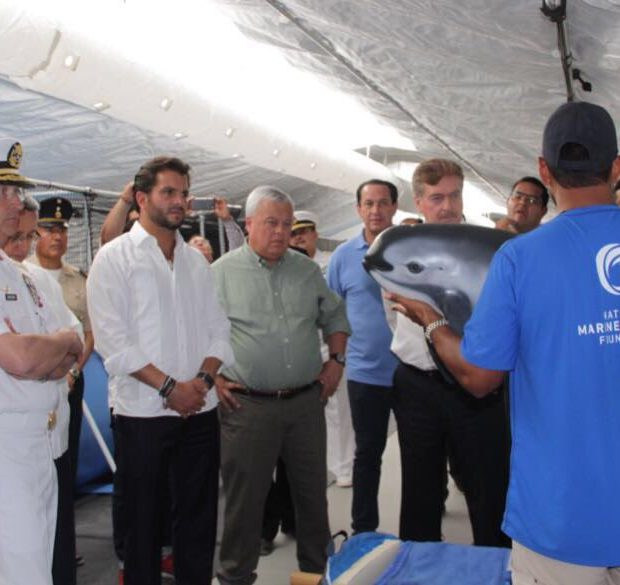By José Antonio Pérez
The project to local and rescue the endangered vaquita marina, endemic to the Upper Gulf of California, through use of trained dolphins has begun with inauguration of the Naval Search, Rescue and Maritime Surveillance Station (Ensar) in Baja California.
Andrea, Fathom, Katrina, and Splash, four bottle-nosed dolphins trained by the U.S. Navy to seek out the endangered vaquita marina in the Upper Gulf of California, arrived in San Felipe earlier this week. Their task is to locate any remaining vaquita marina, estimated at a current population of only 30, directing them to a sanctuary built within the Upper Gulf of California meant to isolate the endangered species and help with reproduction. The four dolphins will “work” two hours daily from Oct 11th – Nov. 11th in the search to find the vaquita.
The goal, detailed Rafael Pacchiano Alamán of the Secretary of the Environment and Natural Resources (SEMARNAT), is to protect the vaquita from illegal gillnets that can still be found in the zone while authorities further steps to eradicate use of these fishing elements.
Pacchiano Alamán furthered the unprecedented effort is an opportunity to prevent extinction of the vaquita marina. He indicated opening of the Search and Rescue Station, which forms part of the CPR Vaquita Program (Conservation, Protection, and Recovery), is the last step in an attempt to guide the vaquita to a safe place where they can reproduce.
The four search dolphins received special training from the U.S. Navy in locating other animals, which took place in the area surrounding the Golden Gate bridge in San Francisco, CA. The dolphins’ job now is solely to locate the vaquita marina and “notify” their trainers as to their findings via a series of jumps. That is when a float of three vessels, crewed by veterinarians specializing in sea mammals, will make their way to the area, encircling the vaquita in order to evaluate the feasibility of capturing them.
The determining factor, however, is stress. If the vaquita are found to be too nervous, they will simply be marked so their movements can be monitored. If the vaquita is calm once located, those in charge of the project will capture it and take it to a station located on the edge of Machorro mountain in the community of San Felipe, Baja California. The vaquita will then spend 48 hours under observation to analyze their behavior and ensure appropriate feeding. The vaquita will be kept in pools especially adapted to house them, equipped with water and air filters along with ultra sound and x-ray equipment to monitor breathing and heart rhythm.
If all goes well, indicated Ricardo Rebolledo of the Animal Care organization, the vaquita will be taken to a type of marine “corral” measuring 45 meters in diameter located 1.5 nautical miles from the beach, where they will be kept for an undefined period in hopes they will reproduce. This could be the longest phase of the process, given vaquita only bear young every two years.
The Secretary of the Mexican Navy, National Defense, Environmental Protection and Natural Resources (SEMARNAT), along with the Federal Environmental Protection Agency (PROFEPA), National Commission of Aquaculture and Fishing, and civil associations all took part in inaugurating the operational model created to safeguard human lives at sea while carrying out surveillance work particularly in the Upper Gulf of California and Rio Colorado Delta.
